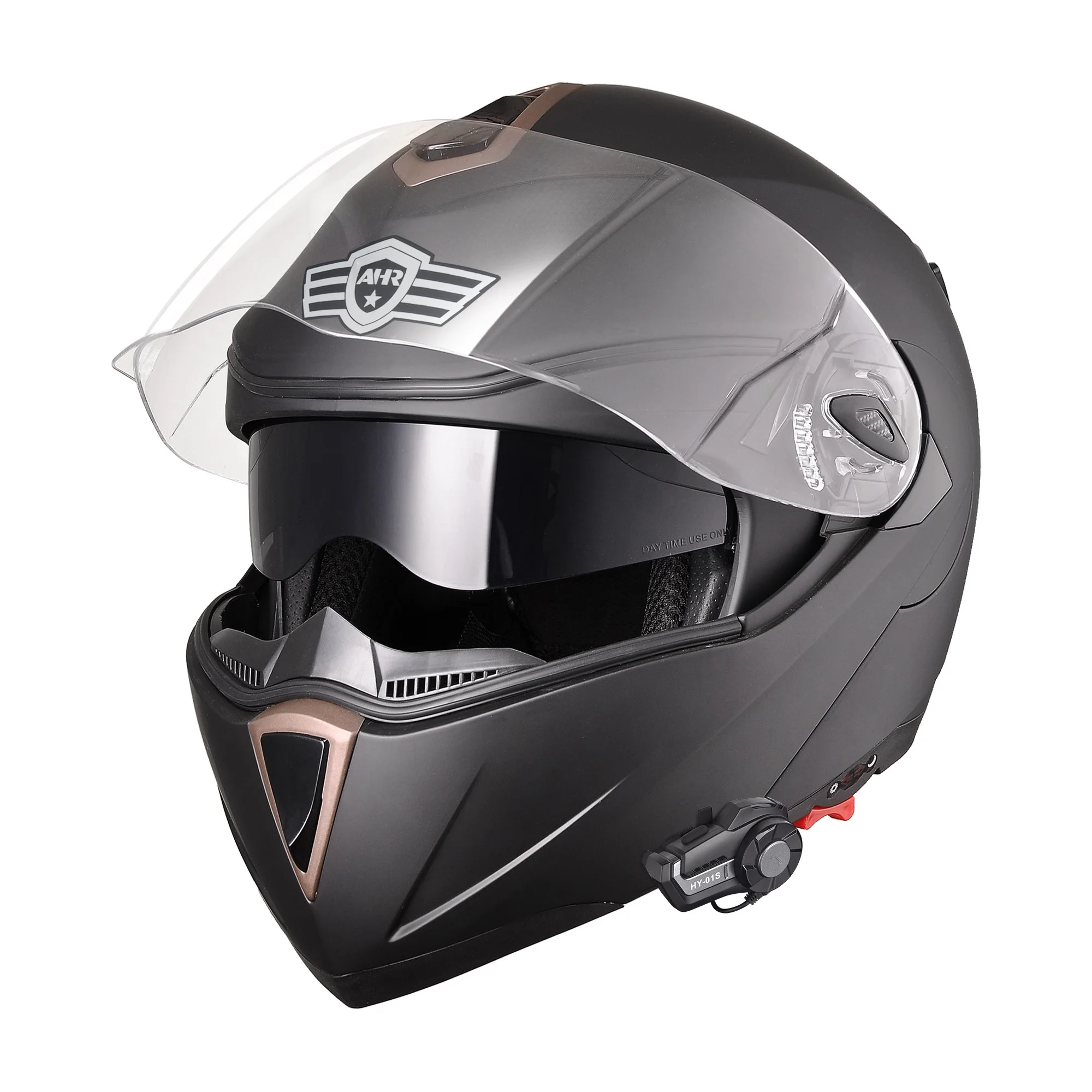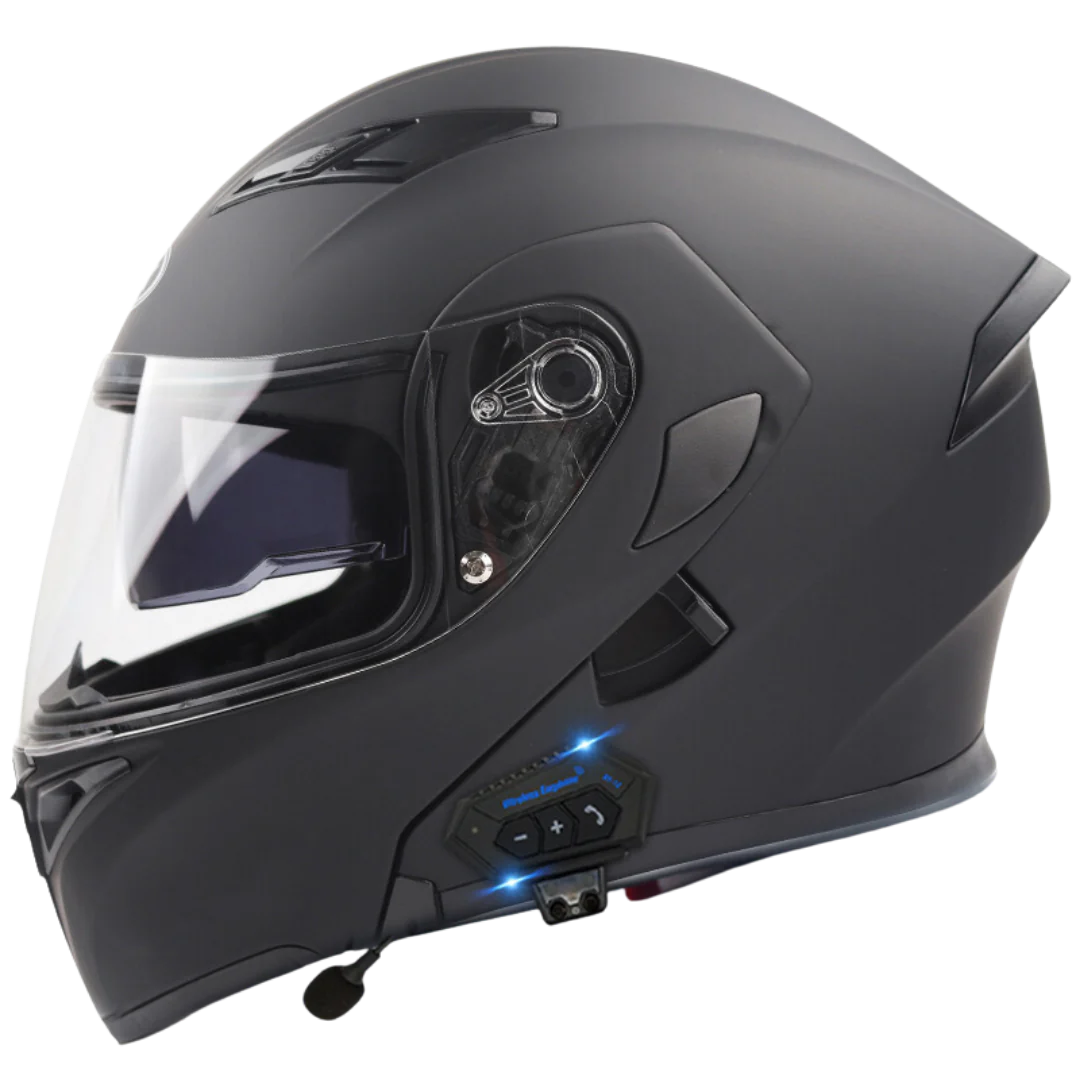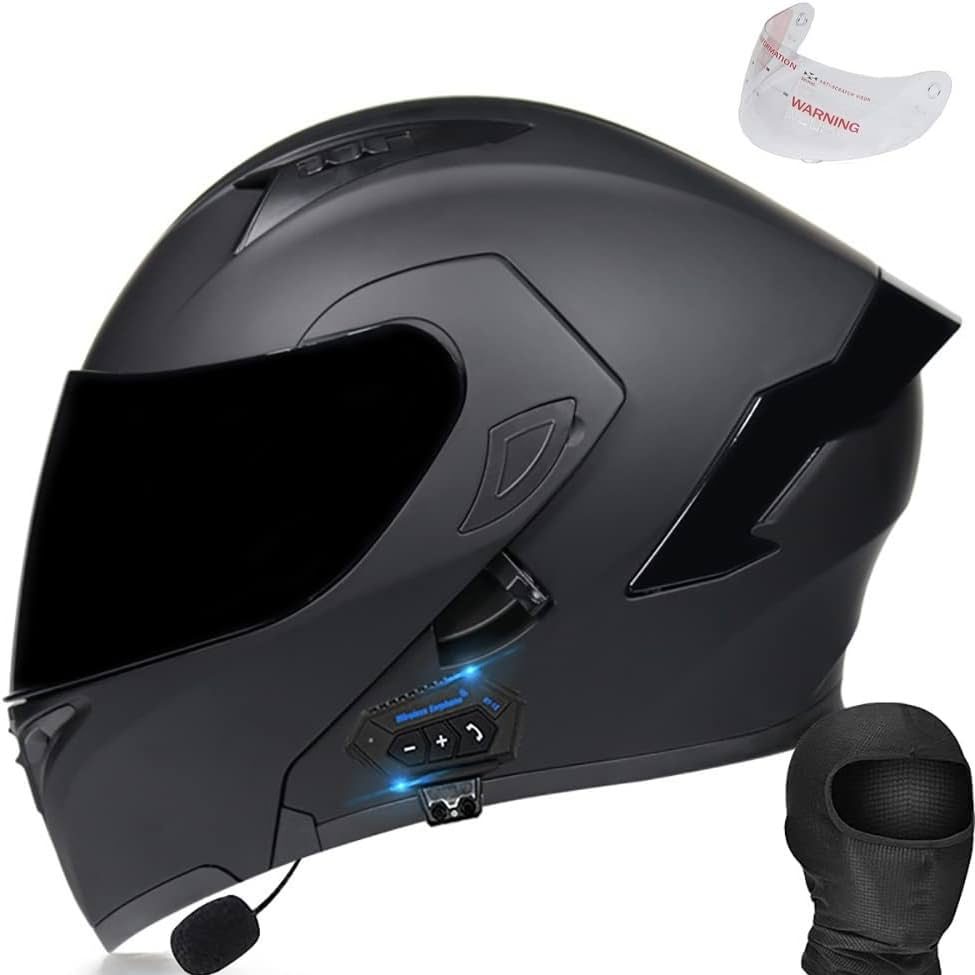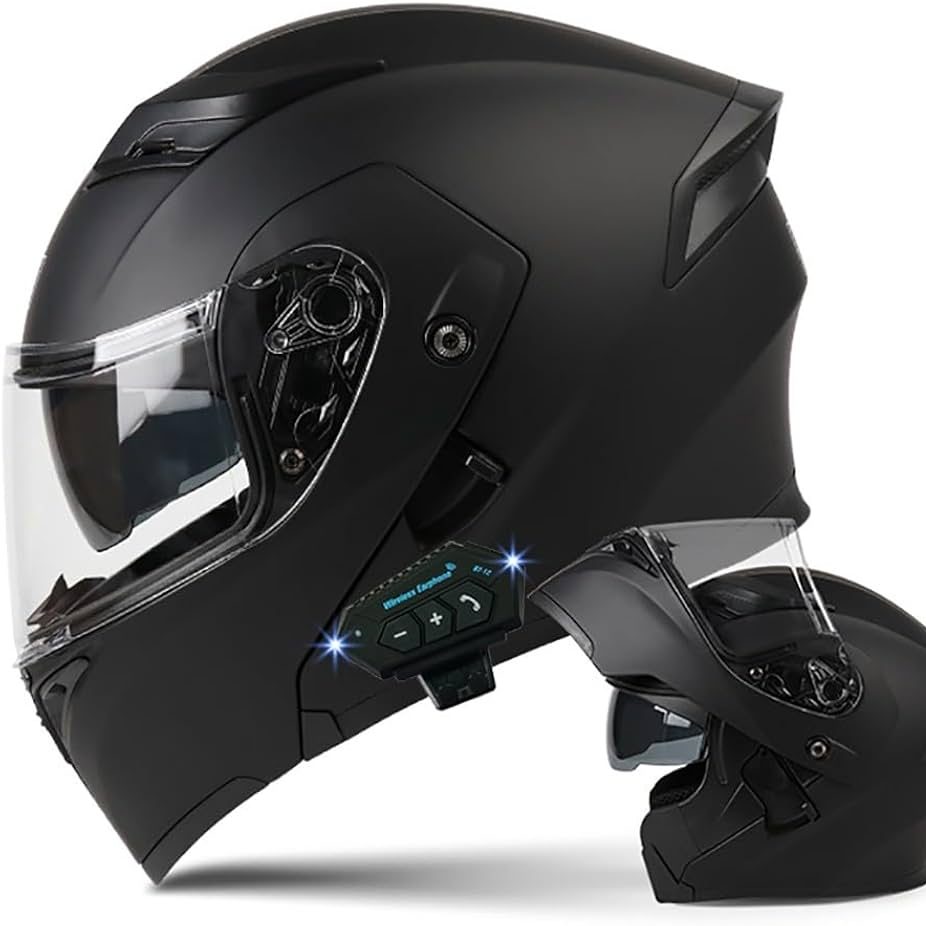When it comes to maximizing your motorcycling experience, safety and convenience are paramount. A Bluetooth motorcycle helmet not only offers protection but also enhances the riding experience by allowing seamless communication, navigation, and entertainment. This guide will delve into every aspect of choosing the ideal Bluetooth motorcycle helmet to suit your needs.
Understanding Bluetooth Motorcycle Helmets
Bluetooth motorcycle helmets have revolutionized the way riders interact with the world around them while on the road. These helmets incorporate communication devices that allow riders to connect to smartphones, GPS systems, and other devices, offering hands-free control and enhanced connectivity.
How Bluetooth Technology Works in Helmets
Bluetooth technology in motorcycle helmet enables wireless communication over short distances. Using radio waves, Bluetooth devices communicate with other Bluetooth-enabled devices, allowing for functionalities such as making phone calls, listening to music, receiving GPS directions, and having intercom conversations with fellow riders.
Key Benefits of Bluetooth Helmets
Enhanced Safety
Safety remains the top priority for any rider. Bluetooth helmets allow for hands-free communication, ensuring that your focus remains on the road. This technology supports safe interaction with essential devices like GPS and smartphones, minimizing distractions while riding.
Improved Communication
Bluetooth helmets are especially beneficial for group rides. The intercom feature allows riders to communicate with each other, coordinating movements and ensuring everyone is on the same page without having to stop.
Entertainment Options
Bluetooth helmets offer entertainment options such as listening to music or podcasts. This feature is excellent for long rides, making the journey more enjoyable and less monotonous.
Factors to Consider When Choosing a Bluetooth Motorcycle Helmet
Selecting the right motorcycle helmet involves considering numerous factors to ensure safety, comfort, and functionality. Let’s explore some essential aspects.
Helmet Type and Fit
Full-Face, Half, or Modular
The type of helmet plays a crucial role in determining the level of protection and comfort.
- Full-Face Helmets: Offer the most protection by covering the entire head and face. Ideal for maximum safety.
- Half Helmets: Provide minimal coverage, exposing more of the face. Suitable for low-speed rides where ventilation is prioritized.
- Modular Helmets: Combine features of full-face and half helmets. They allow riders to flip up the chin bar, offering flexibility.
Proper Fit
Ensuring the helmet fits correctly is vital. A poorly fitted helmet can compromise safety and comfort. Measure your head’s circumference and refer to the manufacturer’s sizing chart. Ensure the helmet feels snug but not overly tight.
Sound Quality
Since communication and audio play a significant role in Bluetooth helmets, sound quality is crucial. Look for helmets with high-quality speakers that deliver clear audio and good bass response. Noise cancellation features are beneficial as they help reduce wind and road noise, offering a better listening experience.
Battery Life
Bluetooth helmets require power to operate. Consider helmets with long battery life to avoid interruptions during rides. A helmet with a battery life of at least 8-10 hours on a single charge is ideal for most riders, ensuring the device remains functional throughout your journey.
Range and Connectivity
The Bluetooth range determines how far apart you can be from other devices while maintaining a stable connection. A range of at least 500 meters is suitable for intercom communication between riders. Also, check if the helmet supports the latest Bluetooth version for better connectivity and features.
Safety Standards and Features
Ensuring your helmet meets specific safety standards is paramount. Look for certifications like DOT, ECE, or Snell, which indicate the helmet has passed rigorous safety tests.
Impact Resistance
Check for helmets made with durable materials like polycarbonate or fiberglass composites, which provide excellent impact resistance. These materials help disperse energy in case of an accident, reducing injury risks.
Visibility and Ventilation
Enhanced Visibility
Some helmets come with reflective materials or bright colors to improve visibility, making it easier for other road users to see you, especially in low-light conditions.
Adequate Ventilation
Good ventilation keeps you comfortable, especially on long rides or in warm weather. Look for multiple vents that allow for airflow, preventing overheating and reducing fogging in the visor area.
Additional Features to Consider
Bluetooth helmets often come with extra features that enhance convenience and functionality.
Integrated Sun Visors
Helmets with built-in sun visors offer ease of use by allowing riders to quickly protect their eyes from glare without needing to stop and change eyewear.
Removable Liners and Padding
Choose helmets with removable and washable liners, contributing to hygiene and comfort. Over time, helmets can accumulate sweat and odor, making removable liners essential for maintenance.
Voice Command Features
Advanced Bluetooth helmets may support voice commands, allowing riders to control their devices without removing their hands from the handlebars. This feature adds another layer of safety by minimizing distractions.
Popular Bluetooth Helmet Brands
Numerous brands offer quality Bluetooth helmets, each with unique features and price ranges. Here’s an overview of some respected names in the market:
Sena
Renowned for its communication technology, Sena offers helmets with excellent intercom capabilities and sound quality. Their helmets often come with robust features like advanced noise control and long battery life, making them a top choice for many riders.
Cardo
Cardo is another leader in the communications space, known for its dynamic mesh technology, which allows flexible connectivity options for riders. Their helmets typically feature effective noise cancellation and premium audio outputs.
HJC
HJC is commended for producing helmets that blend quality and affordability. Their Bluetooth helmets often feature easy integration with communication systems, ensuring reliable performance.
Maintenance and Care for Bluetooth Helmets
Proper maintenance extends the life of your helmet and ensures its performance remains optimal. Here are some tips:
Regular Cleaning
Remove and wash the liners regularly to maintain hygiene. Use mild soap and warm water to clean the exterior and visor of the helmet, preventing the buildup of dirt and debris.
Check for Wear and Tear
Routinely inspect your helmet for signs of wear, such as cracks or frayed straps, to ensure safety is not compromised. If the helmet has experienced a significant impact, it may need replacing, even if no damage is visible.
Battery Maintenance
Ensure the battery is adequately charged before long rides. Avoid storing the helmet in extremely hot or cold conditions, as this can affect battery life and performance.
Identifying Common Bluetooth Helmet Problems
Bluetooth Connection Issues
One of the most frequent problems riders encounter is trouble with Bluetooth connectivity. This can manifest as difficulty pairing with devices, frequent disconnections, or poor sound quality. These issues often stem from software glitches, interference from other devices, or outdated firmware.
Battery and Charging Problems
The battery life of a Bluetooth helmet can be limited by various factors. Over time, batteries tend to lose their capacity, leading to shorter usage times. Riders may also experience issues with charging, such as slow charging or the device failing to charge at all. This can be caused by faulty chargers, damaged cables, or worn-out battery connections.
Audio Quality and Volume Control
Poor audio quality, including low volume, static, or distorted sound, can dampen the riding experience. This issue often relates to the helmet’s speakers or the placement of the microphone. Additionally, software settings or firmware updates can sometimes affect audio performance.
Diagnosing and Troubleshooting Issues
Testing Bluetooth Connectivity
To diagnose connectivity problems, ensure that no other devices are interfering with the connection. Try resetting the Bluetooth module inside the helmet and updating its firmware. If issues persist, it may help to unpair all devices, restart the helmet, and initiate a fresh pairing process.
Assessing Battery Health
To evaluate battery health, begin by examining the charger and cable for any signs of wear or damage. Check if the charging port is clean and free from debris. If the battery is removable, try replacing it with a compatible one to see if the charging issue resolves. Testing the helmet with a different charger can also determine whether the issue lies with the charging equipment.
Evaluating Audio Performance
For audio issues, start by inspecting the speakers for any visible damage. Ensure they’re properly connected and adjust their placement for optimal sound. It may also be beneficial to check audio settings on the connected device and reset the helmet’s factory settings if necessary.
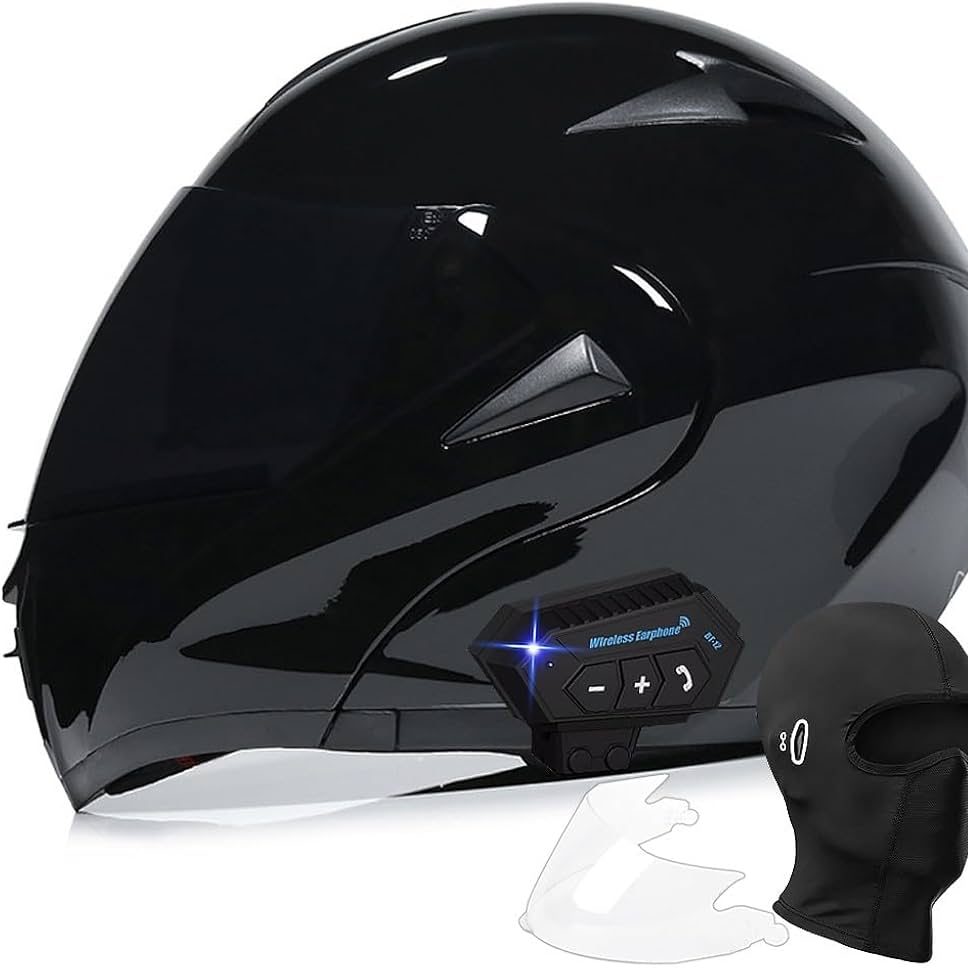 Performing Basic Repairs at Home
Performing Basic Repairs at Home
Replacing the Battery
If battery issues are identified, replacing the battery can be a straightforward fix. For helmets with removable batteries, purchase a replacement from the manufacturer or a reliable third-party vendor. Follow the manufacturer’s instructions to safely remove and install the new battery.
Fixing Connectivity Issues
For persistent Bluetooth problems, try resetting the firmware. Many helmets allow for firmware updates via an app or computer software. This can solve minor software glitches and improve overall connectivity.
Repairing or Replacing Speakers
If the speakers are damaged or not functioning correctly, they may need to be replaced. Obtain compatible speakers from the manufacturer or a certified supplier. Carefully follow the disassembly instructions to replace the speakers without damaging other components of the helmet.
Conclusion
Investing in a Bluetooth motorcycle helmet is a wise decision for any motorcycling enthusiast. These helmets provide a blend of safety, convenience, and entertainment, significantly enhancing the riding experience. By considering factors such as fit, sound quality, battery life, and safety features, you can make an informed choice that meets your specific needs. Remember, a helmet is not just a protective gear but also a crucial component that connects you to the world safely and efficiently.

